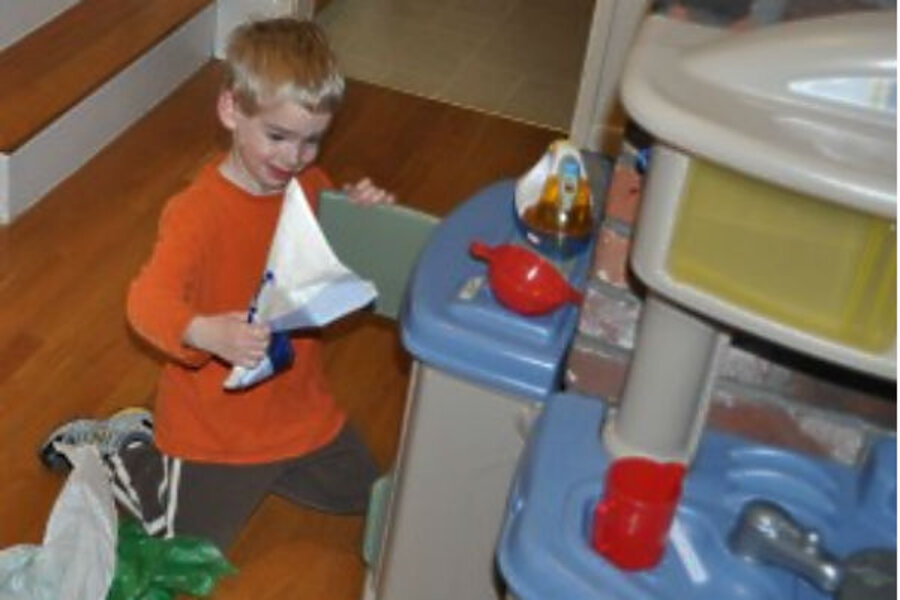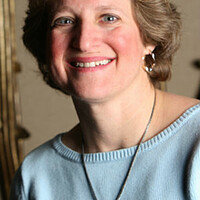Does mother's Passover picture book cross church state line?
Loading...
My son snuggled into my lap as his pre-school classmates clustered around me. I had offered to read a book to his class. No big deal, right? But this wasn’t just any book. It was the day before Passover, and I had brought in a Jewish children’s book.
When I mentioned my upcoming visit to my mother, she asked if I were worried about crossing that line separating church from state. I was not that worried. My son’s preschool is private. Besides, is it promoting Judaism to read a book about Passover?
I wanted to share a bit of my son’s world with his classmates, and his teacher embraced my idea to visit with a book and some Passover food. So did the teacher in the neighboring classroom when she overheard our discussion. She said the children hear plenty about Easter and need to know about Passover.
The 1992 book I read, Mrs. Katz and Tush, by Patricia Polacco, is not just about Passover. It’s a multicultural, intergenerational story about a widow from Poland and the friendship she makes with a black boy who lives nearby. The boy, Larnel, brings Mrs. Katz a kitten as a present, and the widow agrees to keep the cat only if Larnel helps with it.
The girl next to me burst into giggles when I read about how the cat got its name, “Tush.” The kitten has no tail, and tush, well, is a Yiddish word that refers to the derriere. I grew up with a smattering of Yiddish words, but tush was foreign to most of my son’s class and I later learned, some of his school’s teachers. I realized I was not just sharing something about a holiday. I was sharing culture.
In the book, Mrs. Katz and Larnel grow close, and one day, the boy hears the yearning in his friend’s voice when she talks of Passovers past. He asks if he could have Passover dinner with her. She takes him with her to shop and tells him the story of Passover. Mrs. Katz tells Larnel that Jews, like blacks, once were slaves, too.
I winced inwardly when I read the next part about the angel that brought death to the houses of Pharoah’s people, but not the Jews because the angel “passes over” the Jews’ doors. The children, though, seem unperturbed by the chilling part of the Passover story. They moved closer to stare at the colorful illustrations of Mrs. Katz and Larnel eating matzo together.
After story time, I served the children matzo and haroset, a combination of apples, grape juice, cinnamon, raisins, and honey meant to resemble the mortar the Jews had to use when they worked as slaves. I told the children that my son helped me make the haroset, and Simon grinned as he spooned in mouthfuls rather than put it on his matzo.
Did I cross a line with this pre-school visit? No, I don’t think so. The teacher next door asked to borrow the book and read it to her class the same day. No preaching went on through the reading of a book. It was much different than the way I was treated when I was the only Jew in my rural Ohio school in the 1970s; a church volunteer visited weekly to preach a Bible lesson with a Christian focus. My parents got me excused. That isolated me and prompted questions from my classmates. They wanted to know why I didn’t stay. They wanted to know what made a Jew different.
My son’s young classmates perhaps now have a sense of what my peers did not at a much older age. These 4-year-olds know that people celebrate different holidays, and that is perfectly fine. Of course, to be fair, I have to ask myself this: How would I feel if a parent came in and read a children’s story about Easter and how it celebrates the resurrection of Jesus? If the book is sensitive and not preachy, I would be fine with it. My son can benefit from learning about other religions besides his own. I don’t fear that he will suddenly want to change religions. It’s okay if he learns that Easter is about more than just a chocolate bunny.
– The Christian Science Monitor has assembled a diverse group of the best family and parenting bloggers out there. Our contributing and guest bloggers are not employed or directed by the Monitor, and the views expressed are the bloggers' own, as is responsibility for the content of their blogs. Linda Wertheimer blogs at Jewish Muse.






